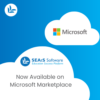When we talk about student attendance in education, we traditionally think of in-person and on-campus. Following a recent, accelerated digital shift in education delivery and a rise in online attendance, we now must think differently.
Modern student attendance can refer to on-campus teaching events, online learning, or off-campus experiences such as placements or internships. The changing nature of teaching and learning delivery means it’s important to remember why attendance, wherever it is, is so vital.
Why attendance matters…
Student attendance at teaching and learning events is strongly linked to student success. It is the primary indicator of a student’s engagement levels with their course of study. It also serves as a first-level indicator for student retention, wellbeing, or academic progression. Research shows that students perform better and are more likely to succeed when they show up.
Common reasons for student absences:
- Physical sickness
- Dealing with depression and other mental health issues
- Family issues
- Working or job-related issues
- Difficulties adapting to in-person classes, post-covid
- Unengaging classes or teachers
- Inconvenient schedules, for example, early morning classes
- No required attendance policy
Poor attendance can create learning gaps. This can lead to students feeling overwhelmed and subsequently missing more classes due to this stress or anxiety. The evidence makes it obvious that student attendance is a crucial factor for student success. This should make it a top priority of all education providers, K-12, Further or Higher Education.
The benefits of student attendance tracking…
In addition to the importance of attendance, education providers should recognise the importance of student attendance tracking. Some benefits of attendance monitoring include:
- Student Success – Drive student academic outcomes.
- Professional Behaviours – Provide critical career skills.
- Student Wellbeing Indicators – Identify and alert staff to at-risk or struggling students in need of support.
- Student Retention – Enable timely and critical outreach to students before it’s too late.
- Blended Learning – Don’t lose sight of students with online learning. Easily monitor student engagement online & off-campus.
- Compliance – Easily comply with compliance and reporting obligations for staff and students.
- Student Safety – Keeping track of what students are on-campus and when is critical to ensuring campus safety.
Tracking student attendance in education can make life easier for staff and improve the student journey. For staff, attendance management gives them the right resources to provide the best educational experience possible to students. For students, it ensures they have an optimal chance at achieving success. Implementing an attendance management system should be a no-brainer for educational institutions, the real question is what system is right for you?
For more detail on student attendance tracking systems see our solutions page.









